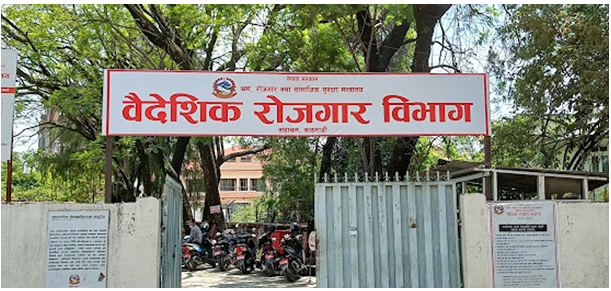
History of Foreign Employment in Nepal
Foreign employment has been a cornerstone of Nepal’s economy and social dynamics, evolving dramatically over two centuries. Let’s explore this evolution in depth.
Early Forms of Foreign Employment (Pre-1990s)
- Gurkha Military Service: Since the early 19th century, Nepalis have served in the British and Indian armies as Gurkhas, following the 1816 treaty with the East India Company. The Tripartite Agreement of 1947, signed by Britain, India, and Nepal, formalized conditions of service, ensuring Gurkhas remained Nepali nationals and were treated equitably .
- Transitional Welfare: Post-service welfare for Gurkhas was institutionalized via the Gurkha Welfare Trust in 1969, which supported retired Gurkha soldiers and their families through aid and resettlement initiatives.
- Seasonal Labor in India: Alongside military recruitment, many Nepalis migrated seasonally to India for agricultural and informal work, leveraging the open border and cultural affinities.
Rise of Labor Migration to the Gulf and Malaysia (1990s–2000s)
- The 1990s marked a sharp escalation in foreign employment beyond military contexts. Political instability and lack of domestic jobs pushed Nepali youth toward opportunities in the Gulf countries (Qatar, UAE, Saudi Arabia) and Malaysia, especially in labor-intensive sectors like construction and manufacturing.
- The Foreign Employment Act of 1985, updated through the late 1990s and 2000s, began formalizing recruitment processes and licensure of agencies to safeguard worker interests. Though a milestone, many issues such as high fees and lack of oversight persisted.
Expansion to East Asian and Western Countries (2010s)
- By the 2010s, migration trends diversified. South Korea emerged as a key destination under the Employment Permit System (EPS), offering legal, structured migration with better pay. Skilled workers increasingly migrated to Japan, Europe, and Australia for education and professional opportunities.
- Remittance soared, and by 2015, it accounted for over 28% of Nepal’s GDP, showcasing one of the highest remittance-to-GDP ratios globally.
Impact of COVID-19 on Foreign Employment (2020–2022)
- The COVID-19 pandemic severely disrupted foreign employment: travel restrictions, business closures, and layoffs resulted in returning migrant workers and reduced new outflows.
- Yet, a remarkable trend persisted: remittance inflow remained resilient, propelled by continued support sent through formal and digital channels—reflecting reliance on migrant incomes.
Current Trends in Nepali Labor Migration (2023–2025)
Recent data from Nepal Rastra Bank sheds light on contemporary trends:
- First 7 months of FY 2024/25 (mid-February 2025):
- Remittance inflows reached Rs 900.58 billion, a 7.3% increase year-over-year; in USD, that’s $6.65 billion, up 5.3%
- 274,622 Nepalis received first-time approval for foreign employment; 190,886 obtained renewals
- First 10 months (mid-May 2025):
- Remittance totaled Rs 1,356.61 billion, marking a 13.2% increase over the prior year; in USD terms, $9.96 billion (up 10.5%)
- Approvals: 405,610 first-timers; 280,314 renewals
- Record monthly remittance in Baisakh (mid-April to mid-May):
- A historic Rs 165.3 billion remittance inflow—highest ever in a single month
- First 11 months (mid-June 2025):
- Total remittance reached Rs 1.532 trillion, up 15.5%; in USD, $11.25 billion, up 12.7%
- Labor approvals: 452,324 first-time, 308,067 renewals
Migration Trends and Destinations
In FY 2023/24, over 741,000 Nepalis obtained approvals to work overseas, a slight decline from the previous year. Among them, 661,125 were men and 80,172 were women. Popular labor destinations include Malaysia, Qatar, Saudi Arabia, UAE, Kuwait, and India. Due to Nepal’s open-border policy with India, no labor permits are needed to work there.
Social and Economic Impact
The continuous outflow of labor has created both opportunities and challenges. While families benefit from steady income, the loss of working-age individuals often causes social strain. Tragically, over 14,000 Nepalis have died abroad in the past 15 years, emphasizing the importance of safer migration protocols.
Regulatory Bodies for Foreign Employment

Department of Foreign Employment Nepal (DoFE)
The DoFE operates under the Ministry of Labour, Employment and Social Security. In July 2024, DoFE suspended the licenses of over 580 manpower companies due to fraudulent practices. It is responsible for:
- Issuing labor permits
- Licensing and monitoring manpower agencies
- Regulating foreign employment practices
- Ensuring migrant welfare
Foreign Employment Board (FEB)
Working in tandem with DoFE, FEB provides:
- Financial aid to families of deceased or injured workers
- Medical and repatriation support
- Awareness programs on safe migration
- Funding from a welfare levy on remittances
Laws and Regulations Regarding Foreign Employment
Nepal's labor migration is governed by the Foreign Employment Act (2007) and the Foreign Employment Rules (2008). Key provisions include:
- Mandatory labor permits for all countries except India
- Licensing and regulation of recruitment agencies
- Pre-departure training and health checks
- Minimum working age of 18
- Bilateral labor agreements with key destination countries
Recent policies promote:
- Zero-cost migration (eliminating recruitment fees)
- Skill-based migration
- Remittance through formal banking channels
- Recruiter Management Information System to track agency compliance
Remittances and Economic Contribution from Foreign Employment
Financial Significance
Remittances are Nepal’s largest source of foreign income, totaling over NPR 1,445 billion in FY 2023/24. This has helped stabilize Nepal’s foreign reserves and achieve a current account surplus.
Household Benefits
Most remittance funds are used for:
- Daily household expenses
- Children’s education and healthcare
- Home construction and savings
- Small-scale investments
Remittances have played a vital role in reducing poverty by nearly 30% in the last decade.
Risks of Overdependence
While beneficial, excessive reliance on remittances makes the economy vulnerable. Events like the COVID-19 pandemic or geopolitical tensions in the Gulf can cause sudden drops in inflows, affecting national income and household stability.
Advantages of Foreign Employment
1. Poverty Reduction: Remittance income has lifted millions of families above the poverty line, improving their quality of life.
2. Economic Stability: Foreign income helps maintain foreign reserves and contributes to macroeconomic stability.
3. Human Capital Development: Migrant workers acquire valuable skills and experiences abroad, which can benefit Nepal if channeled properly upon return.
4. Family and Social Support: Remittance funds often go toward education, medical treatment, and home improvement, supporting overall human development.
5. Reducing Local Unemployment: Migration helps ease pressure on Nepal's limited job market, especially for low- and semi-skilled workers.
Challenges of Foreign Employment
1. Worker Exploitation
Migrant workers frequently face exploitation from unlicensed recruiters, including:
- Illegal fees
- Contract fraud
- Delayed or unpaid wages
2. Health and Safety Risks: Working conditions, especially in construction and factories, often involve physical hazards, long hours, and extreme weather.
3. Debt and Financial Pressure: Many migrants take high-interest loans for recruitment fees. Short-term or failed jobs can trap families in debt.
4. Family Separation and Social Strain: Long absences cause emotional and psychological issues for children and spouses, sometimes leading to family breakdowns.
5. Gender-Based Vulnerabilities: Female migrants are particularly vulnerable to abuse and exploitation, especially in domestic roles in the Gulf region.
6. Economic Fragility: High remittance dependency can stifle domestic industry and reduce motivation for internal job creation.
Alternatives to Foreign Employment
1. Agriculture and Agribusiness: Nepal has untapped potential in modern agriculture. Investments in irrigation, high-value crops, and agro-processing can create sustainable livelihoods at home.
2. Tourism and Hospitality: Nepal’s scenic landscapes and cultural heritage provide rich opportunities for homestays, eco-tourism, and trekking services, creating local jobs and retaining foreign exchange.
3. Manufacturing and Handicrafts: Promoting local industries like furniture, textiles, metalwork, and handicrafts can absorb labor. Government-backed loans at 3% interest are now available for startups.
4. Information Technology and Digital Services: Improved connectivity has enabled youth to explore IT-based entrepreneurship in web development, outsourcing, and digital marketing.
5. Renewable Energy Sector: With abundant hydro and solar potential, energy infrastructure projects can create domestic jobs while boosting national capacity.
6. Government Employment Programs: Initiatives like “One Home, One Job” by local governments aim to provide basic employment or skill training in sectors such as plumbing, healthcare, and teaching.
7. Returnee Entrepreneurship: Returnees are now encouraged to start businesses with government-provided training and soft loans, utilizing skills and savings gained abroad.
In Sum
Foreign employment will continue to play a vital role in Nepal’s economy in the near future. However, heavy reliance on overseas labor is neither sustainable nor risk-free. The government’s dual strategy, ensuring safe migration and building strong domestic alternatives, offers a roadmap for long-term prosperity. By encouraging entrepreneurship, improving vocational training, and supporting local industries, Nepal can gradually reduce its dependence on remittances and create more resilient jobs inside the country.